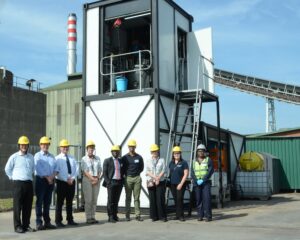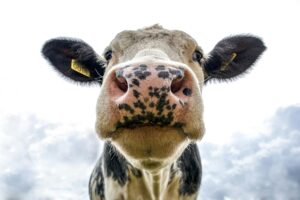These numbers are unsustainable in world where, according to FAO, around 870 million people do not have enough food to eat. This is also bad for the environment, given the fact that food that ends up in landfills generates around 10% of total greenhouse gas emissions. We must also remember that when we waste food, we also waste all the electricity and water that was used to grow, harvest, transport, and package that food.
Today, the industry is increasingly turning to technology to improve their processes and make their operations less wasteful and more sustainable. Food technologies are designed to streamline the production, distribution and supply of food products; improving how people sell, produce and distribute food. Here’s a brief look at how it can help at different stages along the supply chain.
Precision agriculture cuts waste at the source
Food waste starts during the first stage of the supply chain: on farms. According to the World Wildlife Fund (WWF), as much as 1.2 billion tonnes of the food produced globally is lost before it even leaves the farm. A variety of factors cause this waste: from pests and disease to extreme weather events and water scarcity. During the harvest process, inadequate planning, poor use of harvesting technology and a lack of adequate temperature management also increase the risk of waste.
Precision agriculture empowers modern farmers to mitigate many of these challenges. Using a combination of smart sensors and data analytics tools, farmers can improve crop yields and make smarter decisions. It is all about coming up with innovative ways to use traditional resources more effectively, thus, promoting more sustainable agriculture. In action, precision farming can see drones deployed to do aerial inspections so that farmers can better monitor crop health and put preventative measures in place to mitigate issues before they get out of hand.
Doing more with less
Across the manufacturing sector there is constant pressure to maximise efficiencies. Manufacturers are increasingly being asked to up efficiency and productivity while also reducing costs. In addition, food and beverage manufacturers must be transparent around everything that happens as they transform fresh produce into edible products. They also need to be aware of various compliance and regulatory requirements, and, consequently, they must prioritise sustainability.
The right food ERP software provides the visibility modern food manufacturers need to keep tabs of everything happening across their operations. This visibility makes it easier to manage their operations, curb waste and, ultimately, increase their profitability effectively and efficiently.
During the distribution process, the vast majority of food waste or damage is due to inadequate storage conditions and poor handling. To mitigate this, distributors can leverage Internet of Things (IoT) sensors that provide real-time location tracking and make it possible to monitor critical variables (like temperature and humidity) so that operators can quickly respond to any problems. They can use artificial intelligence (AI) to check products for damage, which, in turn, reduces the need for human inspections and increases overall delivery efficiency.
Mitigating waste across the supply chain
Once food reaches retailers, waste is most commonly attributed to the over-stocking of perishable products like fruits and vegetables. But today there are apps that list goods available at shops that are nearing their expiration date so that users can buy them at lower prices. In this way, consumers get a bargain and retailers can recover money that would otherwise have been written off. In some stores, robots are used to check for missing labels and out-of-stock or misplaced items and AI has been deployed to improve ordering efficiency so that retailers can limit oversupply and waste.
And there are even digital tools and technologies to help consumers reduce waste. Typically, waste in our homes is the result of improper storage, a lack of visibility in fridges and misjudged food needs. From appliances that help you keep track of the items in your fridge or pantry to fridge cams that send expiration date reminders, there are so many ways that new technologies can help consumers reduce wastage.
Combatting food poverty is the ultimate goal
When the United Nations adopted its 17 Sustainable Development Goals (SDGs) in 2015, which seek to provide a shared blueprint for peace and prosperity for people and the planet, today and into the future, sustainable food production was included in this list. SDG 12 aims to promote sustainable consumption and production patterns by cutting food waste and loss in half come 2030.
If we are to create sustainable food systems, it is essential that all stakeholders along the food production supply chain come together to develop innovative approaches and interventions to reduce waste. For farmers and manufacturers this means improved monitoring, for retailers this means finding a balance between supply and demand. Not only will this boost food business’ budgets by upping efficiency across their operations, it will also ensure that the 870 million undernourished people around the world are fed.
Photo by Marek Studzinski on Unsplash
Relevant Agribook pages include “Digital agriculture” , “Precision farming“and “Food security“.



